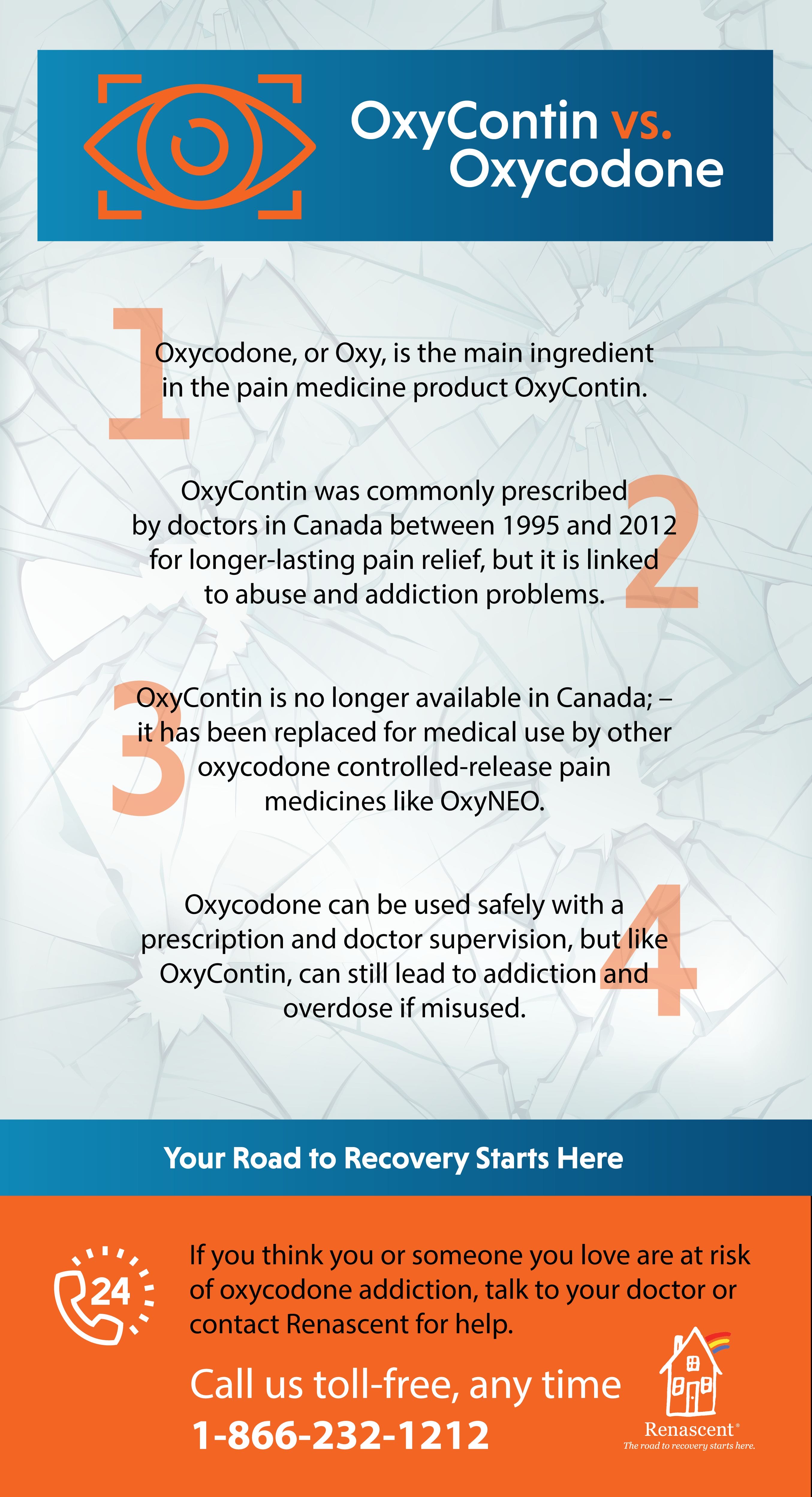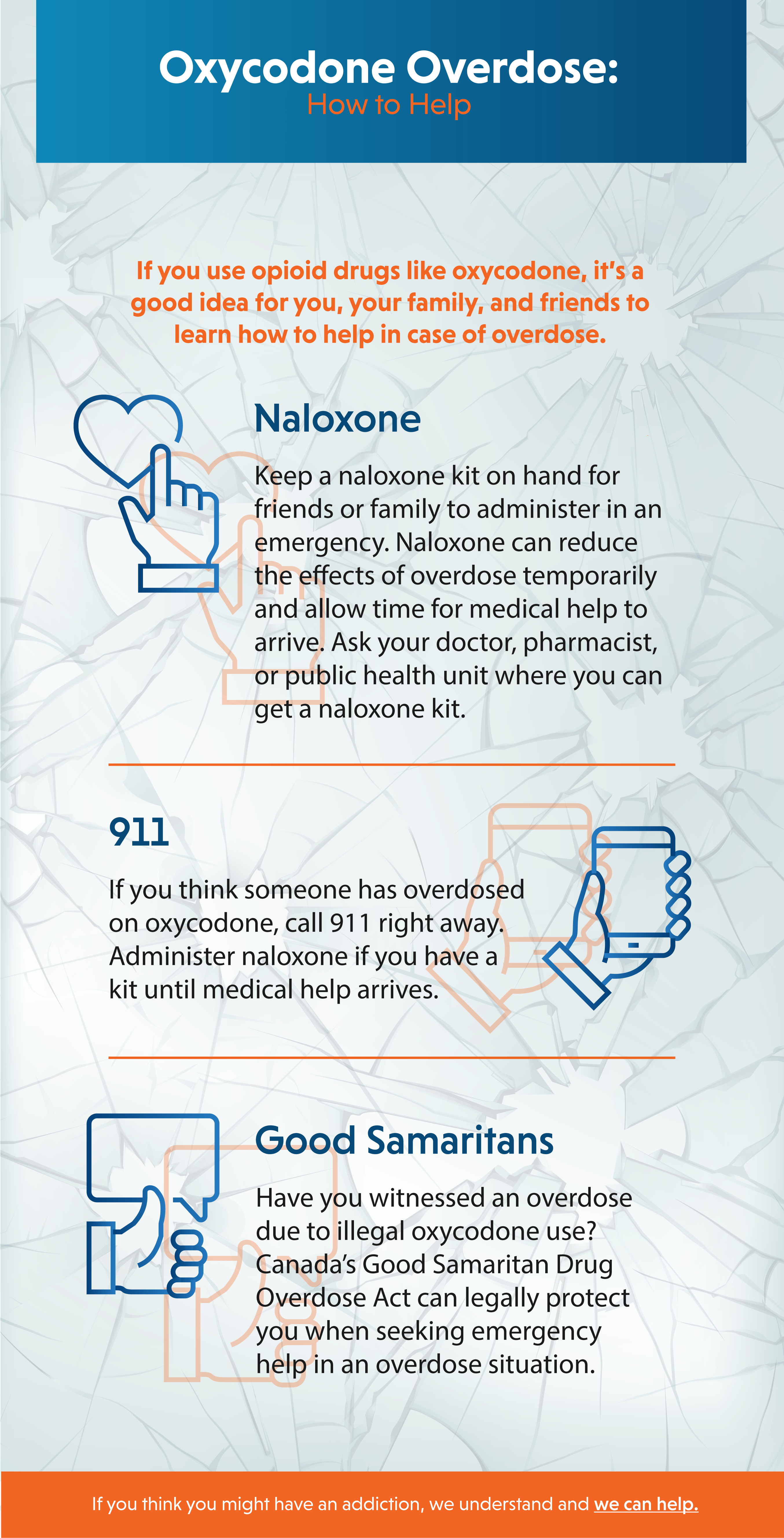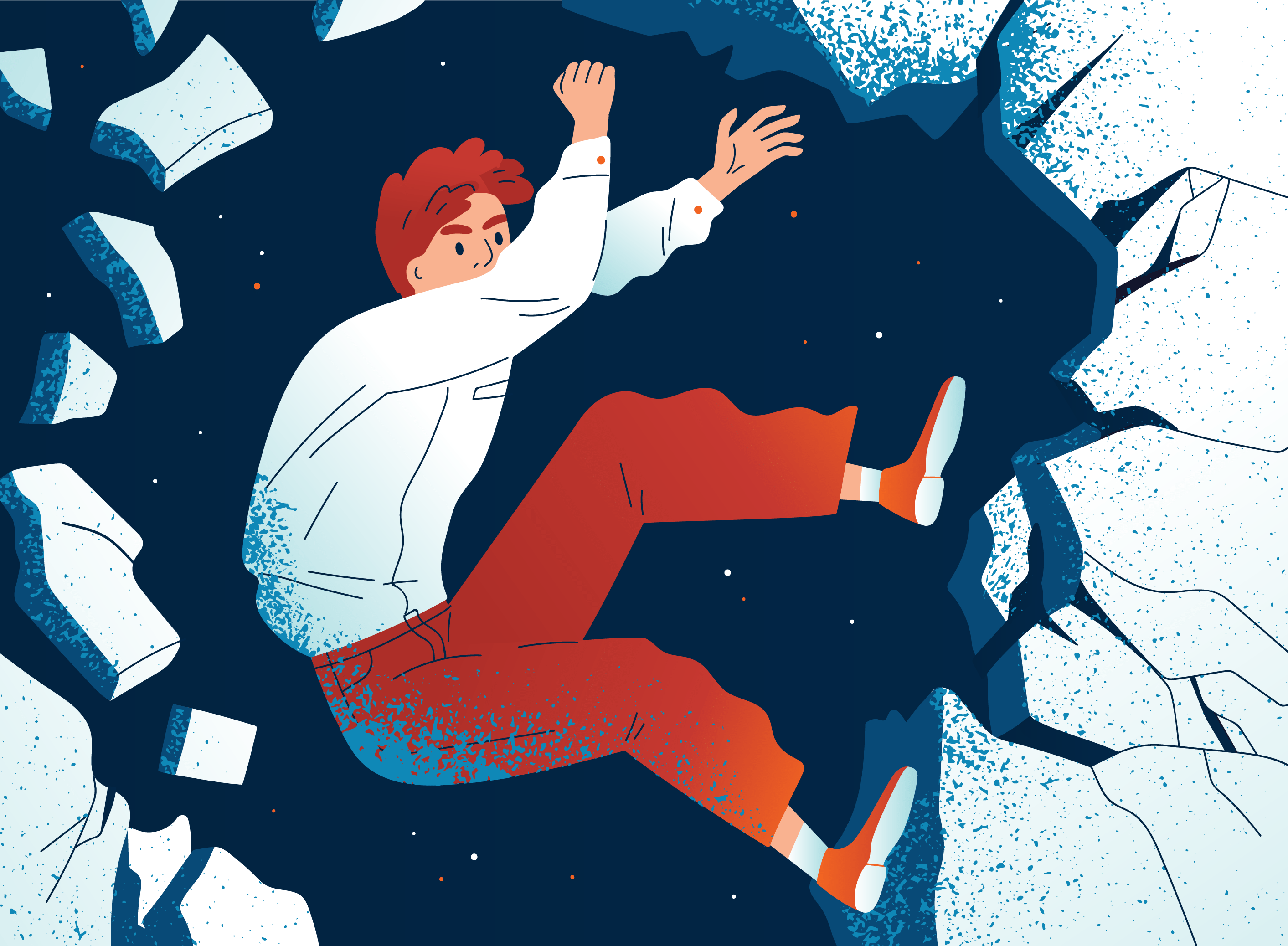The next four days without oxycodone were awful. My skin crawled. I felt as though I was going through the same mental and emotional turmoil I had endured when I stopped drinking alcohol 25 years earlier. The ferocity of the withdrawal from narcotics was surprisingly brutal, just like alcohol.
Excerpt from Renascent Alumni post, July 2015
In light of Canada’s opioid crisis, prescription pain medicines like oxycodone continue to be a risk for misuse and overuse. When prescribed by a doctor and used properly, opioids like oxycodone can safely help people with severe pain, but these powerful drugs can also cause addiction, overdose, and death.
In this article, we’ll talk about oxycodone use in Canada, the risks of taking these narcotic pain medicines, signs and symptoms of opioid addiction, drug treatment options, and how to find lifelong healing and recovery from oxycodone addiction.
As an accredited national leader in treating drug, alcohol, and food addiction for 50 years, Renascent offers intensive and personalized inpatient and outpatient programs that work.
We’ve helped over 50,000 people recover from addiction. We can help you too.
What is Oxycodone?
Oxycodone is a pain medicine prescribed by doctors. It’s a powerful opioid drug, just like morphine, codeine, and methadone.
Opioids like oxycodone produce euphoria, or a mellow, relaxed “high”. At low doses as prescribed by a doctor, they can suppress the sensation of pain in your body and your emotional response to both short- and long-term pain, but these effects are also what makes opioids highly addictive and dangerous.
Oxycodone is taken by mouth as a pill or liquid. It should only be taken and used with a prescription and under the supervision of a doctor. According to the Centre for Addiction and Mental Health, oxycodone is found in several products in Canada:
- together with other drugs in products like Percocet, Oxycocet, and Endocet
- by itself in immediate-release products (IR), such as Oxy-IR
- by itself in controlled-release products (CR), such as OxyContin (no longer available in Canada), OxyNEO, Apo-Oxycodone CR, and PMS-Oxycodone CR.
Oxycodone is a very strong drug: In Canada, one oxycodone controlled-release tablet can contain up to 80 milligrams of oxycodone (the same amount as 16 Percocet tablets). For someone with little or no tolerance to opioids, taking more oxycodone pills than prescribed can cause addiction, overdose, and even death.
Legal Status of Prescription Opioids in Canada
Most prescription opioids like oxycodone are classified in Canada as Schedule I drugs under the Controlled Drugs and Substances Act. Their use is legal only when they are prescribed by a licenced practitioner like a doctor, and used by the person to whom they have been prescribed.
It is illegal in Canada to take, have, make, or sell oxycodone not prescribed to you. It is also against the law to “double doctor” opioid drugs like oxycodone (i.e., getting a prescription for oxycodone from more than one doctor at the same time without telling each doctor).
Oxycodone and Opioid Use in Canada
According to the Canadian Centre on Substance Use and Addiction, opioid pain relievers, including oxycodone, are used by 13% of the Canadian population. More concerning though, is that among Canadians who use opioid pain relievers, about 2% reported using them for non-medical purposes.
Similarly, the 2017 Survey on Opioid Awareness reported that 3 in 10 Canadians aged 18 and over had used some form of opioids in the past 5 years. Of those, 1 in 4 were storing leftover opioid medicines in their home.
Oxycodone used to be available in Canada in the long-lasting pain relief product OxyContin. OxyContin was commonly prescribed to help patients manage severe pain, such as pain from surgery, cancer, and chronic health problems. However, because OxyContin was widely misused and has been linked to the opioid crisis, it is no longer available in Canada.

Risks of Taking Oxycodone
When used as prescribed by a doctor, oxycodone can be a safe way to relieve pain without overdose or addiction, but the dangerous risks for misuse are real.
Taking oxycodone when it is not prescribed to you, or taking more than is prescribed to you, can lead to overdose and death. The risk increases when people crush or chew a controlled-release oxycodone pill, or dissolve the pills for injection, causing all of the powerful oxycodone to be released into their bodies at once.
It is also very easy to become addicted to opioid drugs like oxycodone. Taking oxycodone without a prescription is a risk for addiction, and taking more or using it more often than prescribed can quickly build tolerance to the medicine. It can be very hard to quit oxycodone once addiction sets in.
Other serious risks of misusing oxycodone include getting HIV, hepatitis, and other life-threatening infections through shared needles. You can also be arrested, convicted, and sentenced to jail time for using oxycodone illegally.
There are also many common side effects from taking opioid drugs like oxycodone. In addition to withdrawal sickness, taking oxycodone can have side effects such as constipation, sexual problems, swelling, nausea, vomiting, sweating, itching, and sleepiness.
In their fact sheets on the opioid crisis, the Government of Canada outlines the many short- and long-term effects of taking both prescribed and illegal opioids, and how to take and store your prescription opioid medications safely.
If you are worried you are becoming tolerant or addicted to oxycodone, talk to your doctor or call Renascent today.

Oxycodone Addiction Symptoms
If you’ve been prescribed oxycodone for pain relief, you might be concerned about the risk of addiction. It’s important to take your oxycodone medicine as prescribed, and always talk to your doctor if you think you need to make changes to the amount or frequency you are taking these drugs.
You should also store your prescription oxycodone in a secure place away from children and teenagers.Never share your oxycodone medication with anyone else, and return any unused oxycodone to your pharmacist.
People with long-term pain can develop a tolerance to their prescription oxycodone. Your doctor can help you manage your symptoms and tolerance and adjust your prescription safely, or help you find other drugs or strategies for relieving your pain.
Similar to other opioid drugs, there are common signs and symptoms of oxycodone addiction to watch out for:
- Needing to use more oxycodone, and more often, to get the same effect.
- Physical symptoms such as shakes, cramps, vomiting, muscle pain, trouble sleeping, and restlessness when you aren’t using oxycodone.
- Spending more time and money getting oxycodone than with friends, family, and activities you used to enjoy.
It can be hard to admit you have a problem with drug use, especially with a drug that has been prescribed to you by a doctor. If you think you might have an addiction, we understand and we can help.
How to Beat Oxycodone Addiction
An accredited, personalized, and abstinence-based treatment is recommended for opioid addictions, including oxycodone. In our 50 years of experience treating drug, alcohol, and food addictions, we know that the right professional treatment can help people find life-long healing and recovery.
For example, our comprehensive, Toronto-region, opioid addiction treatment programs take place in safe, serene, and caring environments inside beautifully restored heritage homes. Our abstinence-based model integrates 12-step facilitation with other best practices in clinical and medical approaches, which are proven to make a difference in long-term sobriety.
A high-quality, comprehensive inpatient (residential) treatment program is the best way to overcome oxycodone addiction. For example, every treatment stay at Renascent drug treatment centres includes:
- Education on your addiction and its physical, emotional, social, and spiritual effects
- Cognitive behaviour therapy to understand and change your addiction behaviour patterns
- 12-step facilitation
- Personalized one-on-one and solution-focused therapy
- Group therapy
- Art therapy
- Meditation and mindfulness
- Regular exercise, sleep, and healthy eating
Inpatient programs also have around-the-clock counselling and support from experienced, qualified staff who will provide you with tools and education in practical recovery and life skills that will make long-term recovery more successful.
How to choose your addiction treatment program
It can be hard to decide what type of treatment program you need. There are a lot of options out there, and each person has different needs and resources for addiction treatment.
Our treatment option chart outlines some of the choices you have at Renascent, or through other healthcare providers. Don’t see what you need? Contact us anytime for a confidential assessment where we can match you with the support you’re looking for.
| If You Are: | We Might Suggest: |
| Looking for one-on-one support | A one-on-one counselling session with one of our addiction experts |
| Seeking a community who understands | Inpatient treatment with group counselling, or AA/NA/CA/OA meetings |
| Struggling with relapse | 42-days of Inpatient Treatment, followed by active participation in our Continuing Care program. |
| In recovery, but looking to connect with informal support | Getting involved with Renascent’s Alumni Care community. There are regular meetings, engaged committees, and events for everyone. We’re here for life! |
| Concerned how addiction in your family might be impacting your children | Safe programs geared for kids and parents/caregivers, such as Children’s Healthy Coping Skills |
| Worried about your family member or loved one, including siblings, close friends, and partners | Our Essential Family Care Programs, particularly the Introduction to Family Care |
| A parent in active recovery | A weekend course like Parenting in Recovery, to help you boost your parenting skills |
| Concerned addiction is affecting your work or workplace | Our Corporate Complete Care Advantage, designed to support employees and employers as they navigate addiction and recovery in the workplace. |
| Worried about life after treatment | Our Continuing Care Program, to support you as you re-integrate into your daily home life. |
| Looking for housing after treatment | One of our many Community Partners who offer post-treatment housing. Call us at 1-866-232-1212 and we can put you in touch. |
| Looking to get “clean” or detox. | The ConnexOntario Helpline, 1-866-531-2600, can connect you with Withdrawal Management Services. If you are interested in treatment following detox, call 1-866-232-1212 and we’ll coordinate this. |
Life After Opioid Drug Treatment
Finding an after-care program, like the Continuing Care and Alumni programs offered at Renascent, extends your counselling support, peer support, and education following an inpatient or outpatient drug addiction treatment program.
The goal of an after-care program is to support you to maintain your abstinence, and help you re-establish it if you struggle with relapse.
After-care programs can be in-class or over the phone with a treatment centre, or group meetings and social events through organizations like Narcotics Anonymous. However you choose to continue your healing, the idea is to build a healthy, safe, and strong community foundation for your recovery and long-term freedom from addiction.
Your Road to Recovery Starts Here
Your addiction recovery journey begins with “I need help.” We’ve helped over 50,000 people recover from addiction. We can help you too.
The staff at Renascent is passionate about helping people with substance addictions so they can reach their full recovery, with compassion, respect, empathy, and understanding. Our multidisciplinary team includes our counsellors, all of whom have lived experience of addiction and long-term recovery.

